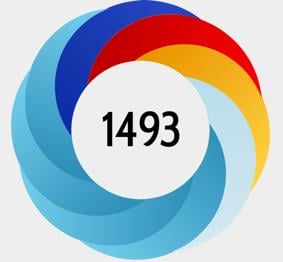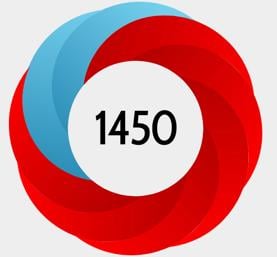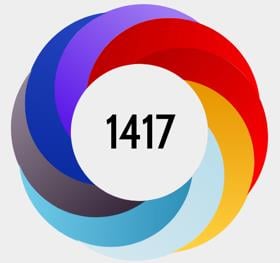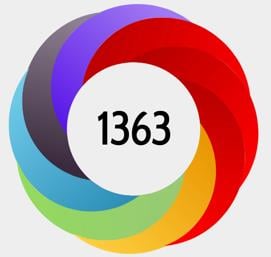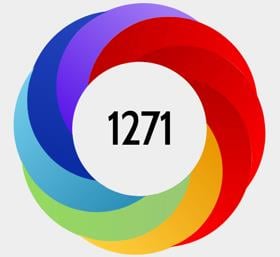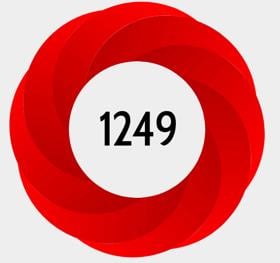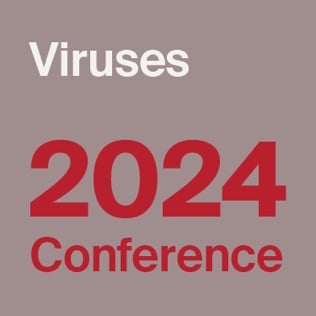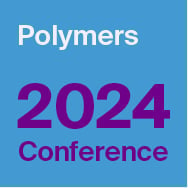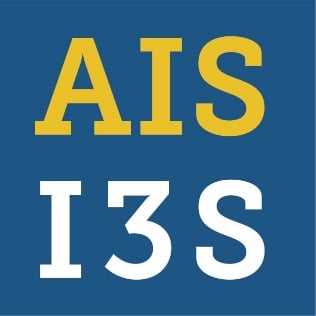
Journal Menu
► ▼ Journal Menu-
- Biosensors Home
- Aims & Scope
- Editorial Board
- Reviewer Board
- Topical Advisory Panel
- Instructions for Authors
- Special Issues
- Topics
- Sections & Collections
- Article Processing Charge
- Indexing & Archiving
- Editor’s Choice Articles
- Most Cited & Viewed
- Journal Statistics
- Journal History
- Journal Awards
- Conferences
- Editorial Office
Journal Browser
► ▼ Journal BrowserNeed Help?
Announcements
26 March 2024
Biosensors Webinar | Detection and Characterization of Antimicrobial Resistance in Agricultural, Food and Biosystems, 11 April 2024

You are welcome to join this webinar on the detection and characterization of antimicrobial resistance (AMR) in agricultural systems, food systems, and biosystems.
In this webinar, three leading experts from USA will talk about their work in characterizing AMR transport during composting and its implications for agriculture production, the detection and characterization of AMR in food supply chains, and the development of various biosensing techniques for AMR detection in biosystems.
The spreading of AMR in agricultural and food supply chains, as well as in biosystems, poses a significant threat to public health, and to deal with this threat, we must understand how AMR genes are transported throughout biosystems. Biosensors and data-driven analysis play key roles in fulfilling these needs.
Today, we will discuss some aspects of these exciting new developments.
Date: 11 April 2024 at 4.00 p.m. CEST | 10:00 a.m. EDT | 10:00 p.m. CST Asia
Webinar ID: 824 9996 9601
Webinar Secretariat: journal.webinar@mdpi.com
Webinar Webpage: https://sciforum.net/event/Biosensors-1
Register now for free!
| Speaker/Presentation | Time in CEST | Time in EDT |
| Dr. Chenxu Yu Chair Introduction |
4:00–4:10 p.m. | 10:00–10:10 a.m. |
| Dr. Chenxu Yu Characterizing AMR Transport during Composting |
4:10–4:30 p.m. | 10:10–10:30 a.m. |
| Q&A Session | 4:30–4:40 p.m. | 10:30–10:40 a.m. |
| Dr. Paul Takhistov Detection of AMR in Food Supply Chains |
4:40–5:00 p.m. | 10:40–11:00 a.m. |
| Q&A Session | 5:00–5:10 p.m. | 11:00–11:10 a.m. |
| Dr. Evangelyn C. Alocilja Development of Various Biosensing Techniques for AMR Detection |
5:10–5:30 p.m. | 11:10–11:30 a.m. |
| Q&A Session | 5:30–5:40 p.m. | 11:30–11:40 a.m. |
| Dr. Chenxu Yu Closing of Webinar |
5:40–5:45 p.m. | 11:40–11:45 a.m. |
After registering, you will receive a confirmation email containing information on how to join the webinar. Registrations with academic institutional email addresses will be prioritized.
Unable to attend? Register anyway and we will inform you when the recording is available.
Webinar Chair and Keynote Speakers:
- Dr. Chenxu Yu (Chair), Department of Agricultural and Biosystems Engineering, Iowa State University, Ames, Iowa, USA;
- Dr. Paul Takhistov, Department of Food Science, Rutgers the State University of New Jersey, New Brunswick, NJ, USA;
- Dr. Evangelyn C. Alocilja, Department of Biosystems and Agricultural Engineering, Michigan State University, East Lansing, MI, USA.
Relevant Special Issue:
“Biosensing, Biosafety and Diagnosis”
Guest Editor: Dr. Chenxu Yu
Deadline for manuscript submissions: 15 September 2024
7 March 2024
Biosensors 2022 Best Paper Award—Winners Announced
We are pleased to announce the winners of the Biosensors 2022 Best Paper Award. All papers published in 2022 in Biosensors (ISSN: 2079-6374) were considered for the award. After a thorough evaluation of the originality and significance of the papers, citations, and downloads, two winners were selected.
One Review:
“Recent Advances of Point-of-Care Devices Integrated with Molecularly Imprinted Polymers-Based Biosensors: From Biomolecule Sensing Design to Intraoral Fluid Testing”
by Rowoon Park, Sangheon Jeon, Jeonghwa Jeong, Shin-Young Park, Dong-Wook Han and Suck Won Hong
Biosensors 2022, 12(3), 136; https://doi.org/10.3390/bios12030136
One Article:
“Detection of Unamplified E. coli O157 DNA Extracted from Large Food Samples Using a Gold Nanoparticle Colorimetric Biosensor”
by Emma Dester, Kaily Kao and Evangelyn C. Alocilja
Biosensors 2022, 12(5), 274; https://doi.org/10.3390/bios12050274
Each winner will receive CHF 500 and a chance to publish a paper in Biosensors in 2024 after peer review.
Please join us in congratulating the winners of the Biosensors 2022 Best Paper Award. We would also like to take this opportunity to thank all of our authors for their continued support of Biosensors.
Biosensors Editorial Office
4 March 2024
MDPI Insights: The CEO's Letter #9 - Romania, Research Integrity, Viruses

Welcome to the MDPI Insights: The CEO's Letter.
In these monthly letters, I will showcase two key aspects of our work at MDPI: our commitment to empowering researchers and our determination to facilitating open scientific exchange.
Opening Thoughts

Reka Kovacs (Deputy Office Manager, MDPI), Stefan Tochev (CEO, MDPI), and Sandra Ana Spatariu (Office Manager, MDPI) at the MDPI office in Cluj, Romania.
MDPI’s Impact on Romania
In February, I visited our office in Cluj, Romania. I worked closely with our senior office managers and various teams, including the departments of training, marketing and conferences, as well as our journal relationship specialists, reviewing our service to the local scholarly community. During the visit, I also met with representatives from Babes-Bolyai University and the Technical University of Cluj-Napoca. Our multifunctional Romanian office plays an important role in supporting our collaborations with the local market as well as helping to meet MDPI’s overall business needs.
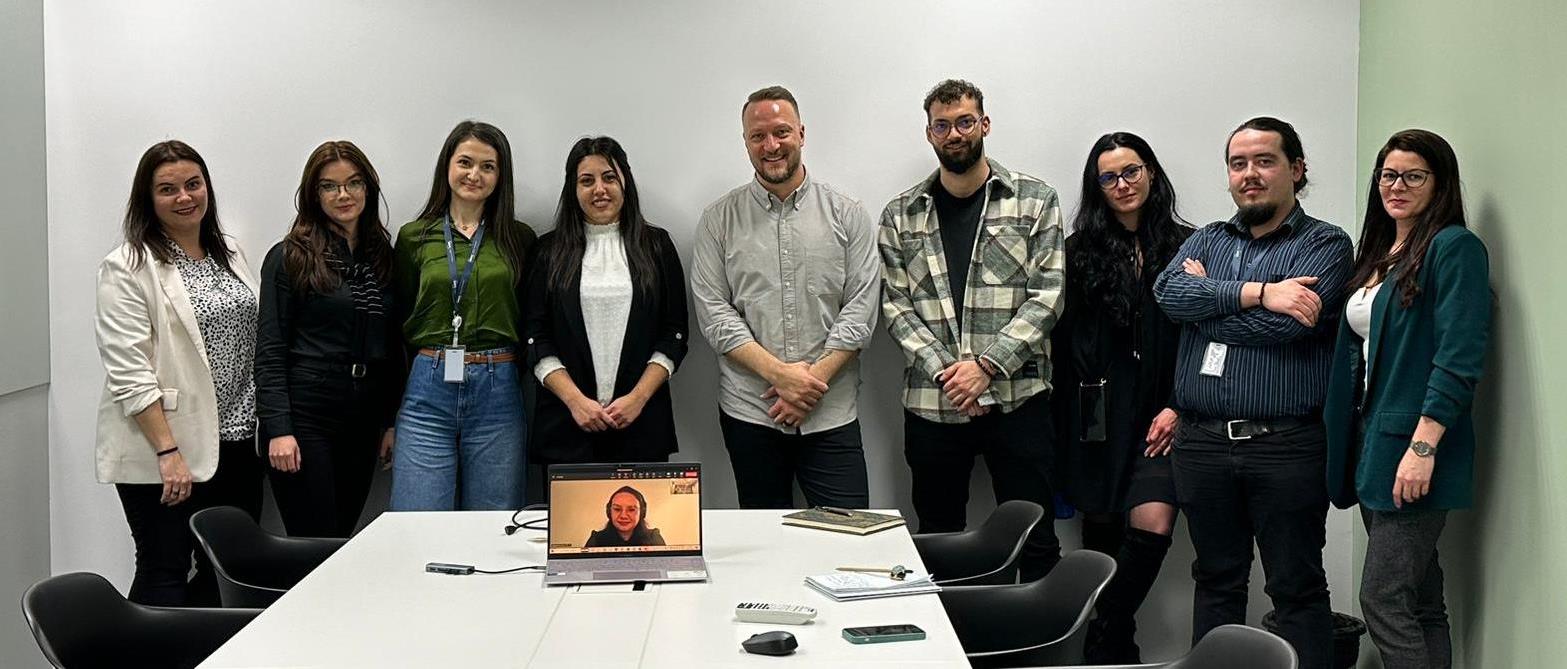
Feedback and strategy meeting with a group of MDPI’s Journal Relationship Specialists at the MDPI office in Cluj, Romania.
With 22,436 articles, Romania ranks as a top 20 contributing country to MDPI’s total number of papers published as at 28 February 2024. This highlights the importance of our collaboration with Romanian-affiliated authors and the growing opportunity to support their publishing needs. MDPI is one of the few academic publishers with a significant presence in Romania, boasting over 360 colleagues across our offices in Bucharest and Cluj. We are also proud to hire colleagues from local institutions to launch their careers within publishing.
Romania ranks as a top 20 contributing country.
The Numbers: 2019–2023
MDPI has seen a healthy increase in submissions from Romanian authors over the past three years, from 8,439 in 2021 to 11,866 by end of 2023, with most submissions going to journals such as Sustainability, Medicina, Diagnostics, IJMS, Applied Sciences, and JCM. From 2019 to 2023, MDPI published articles from 32,145 authors affiliated with Romanian institutions. Over those years, we have worked with Romanian Guest Editors on nearly 3,000 occasions to support their Special Issue and Topical collections.
With more than 300 Editorial Board Members from Romania, 34 appear on the board of Mathematics, 27 on Materials, 19 on Polymers, 18 on Coatings, and 16 on Molecules, while three serve as Section Editors-in-Chief (SEiC) on our journals Coatings (3.4 IF, 4.6 Citescore), Magnetochemistry (2.7 IF, 3.5 Citescore), and Chemosensors (4.2 IF, 3.9 Citescore).
Institutional Open Access Programs
Our commitment to working with institutions is evident in Romania, where we have established eight Institutional Open Access Programs (IOAP) with esteemed institutions such as the University of Bucharest, the University of Medicine and Pharmacy Cluj-Napoca, and most recently the National Institute for Laser, Plasma and Radiation Physics.
Our growth and presence in Romania are a true testament.
We also have IOAP agreements with Babes-Bolyai University and the Technical University of Cluj-Napoca, where I had the opportunity to meet senior stakeholders during my visit. Below are a few photos capturing our meeting with Prof. Radu Silaghi-Dumitrescu (Head of Faculty of Chemistry, Babes-Bolyai University) at the MDPI office in Cluj, Romania, along with a photo from our meeting with Vice Deans Nicoleta Cobarzan, Nicoleta Ilies, and Hoda Gavril, from the faculty of Civil Engineering at the Technical University of Cluj, Romania.


Our growth and presence in Romania are a true testament to the service we provide to the scholarly community and the relationships we foster in that region. We look forward to continuing to support Romanian scholars and institutions by providing a valuable and trusted experience with MDPI, the leader in open access publishing.
Impactful Research

MDPI Joins the STM Integrity Hub
MDPI has long been a supporter and partner of STM, with our involvement ranging from sponsoring and attending events to helping organize event programs. By joining the STM Integrity Hub, we aim to further our commitment to STM initiatives aimed at safeguarding the integrity of science.
“We are pleased to welcome MDPI as the 35th organisation participating in the Hub. This expansion is critical, as every new member enhances our capacity to prevent fraudulent submissions from entering the academic record.”
Joris van Rossum, Director of Research Integrity, STM
MDPI operates in full alignment with STM Integrity Hub's values of shared data and experiences. We strongly believe in collaboration and open exchange for the purposes of creating a holistic approach to support research integrity at MDPI itself and across the entire academic publishing industry. The Integrity Hub is an excellent example of how publishers can come together to jointly address industry-wide challenges related to research integrity, such as manuscripts that breach research integrity standards and paper-mills.
I look forward to our Research Integrity and Publication Ethics Team (RIPE) team immersing themselves in this initiative, exchanging information, best practices, and tools for the benefit of the entire scholarly ecosystem. We believe that ethical publishing standards should be implemented across the board, and we aim to be rigorous in our approach, addressing research integrity issues and improving the impact of published research.
Inside MDPI

MDPI Expands Research Integrity and Publication Ethics Team (RIPE)
In addition to external collaborations and joint initiatives aimed at further strengthening our commitment to research integrity, we are also enhancing our internal efforts. This includes improving our processes and guidelines and expanding our teams and departments to ensure quality assurance throughout our publishing process.
We are pleased to announce the expansion of our Research Integrity and Publication Ethics Team (RIPE) at MDPI. The RIPE team has recently welcomed new colleagues, each bringing unique skills and a personal commitment to prioritize ethical considerations in all our work.
The demand for research integrity and high ethical standards in academic publishing is steadily rising across our industry. Our expanded RIPE team will work to enhance and align our practices with industry best practices, ensuring excellence in research integrity and publication ethics.

Stefan Tochev (CEO, MDPI) introduces Dr. Tim Tait-Jamieson (Research Integrity Lead, MDPI) for his presentation on MDPI’s Retraction and Approval Process to a group of Journal Relationship Specialists at the MDPI office in Cluj, Romania: “The demand for research integrity and publication ethics is steadily rising across our industry.”
Introducing our Research Integrity and Publication Ethics Team
Led by Dr. Tim Tait-Jamieson (Research Integrity Lead), the RIPE team comprises Dr. Ivana Resanovic (Research Integrity Manager), Dr. Lavinia Rogojina (Research Integrity Manager), Ms. Diana Apodaritei (Research Integrity Specialist), Dr. Zoltan Mihaly (Research Integrity Specialist), Mr. Aleksandar Đukić (Research Integrity Specialist), Ms. Ana Stankovic (Research Integrity Specialist), and Ms. Anna Pena (Publication Ethics Assistant).
Please click here to access everything that you need to know about MDPI’s Research and Publication Ethics.
With this span of complementary roles, the RIPE team collaborates directly with journal editorial teams and works closely with various departments, including our Scientific Office Board and our Journal Relationship Specialists. The team’s primary objectives are to help prevent issues regarding research integrity and publication ethics during peer review, uphold MDPI’s ethics policies, adhere to industry standards, and resolve publication ethics and research integrity issues and complaints.
Quality Updates to Special Issues Oversight
At MDPI, we are committed to reviewing policies pertaining to the quality of research. In this blog post, Shaheena Patel (Communications Associate, MDPI), outlines two recent updates to MDPI journal processes. These updates pertain to Special Issue (SI) quality guidelines, in line with criteria provided by COPE and DOAJ. Alongside the SI updates, details regarding the new minor corrections policy introduced in 2024 are provided in the blog.
The two updates we implemented include greater oversight and the verification of Guest Editor credentials. These guidelines require that Editors-in-Chief (EiCs) and Editorial Board Members (EBMs) take responsibility for overseeing SIs.
PS. Thank you, James Butcher, for featuring this up in your 67th issue of the Journalogy newsletter.
Read more:
Coming Together for Science
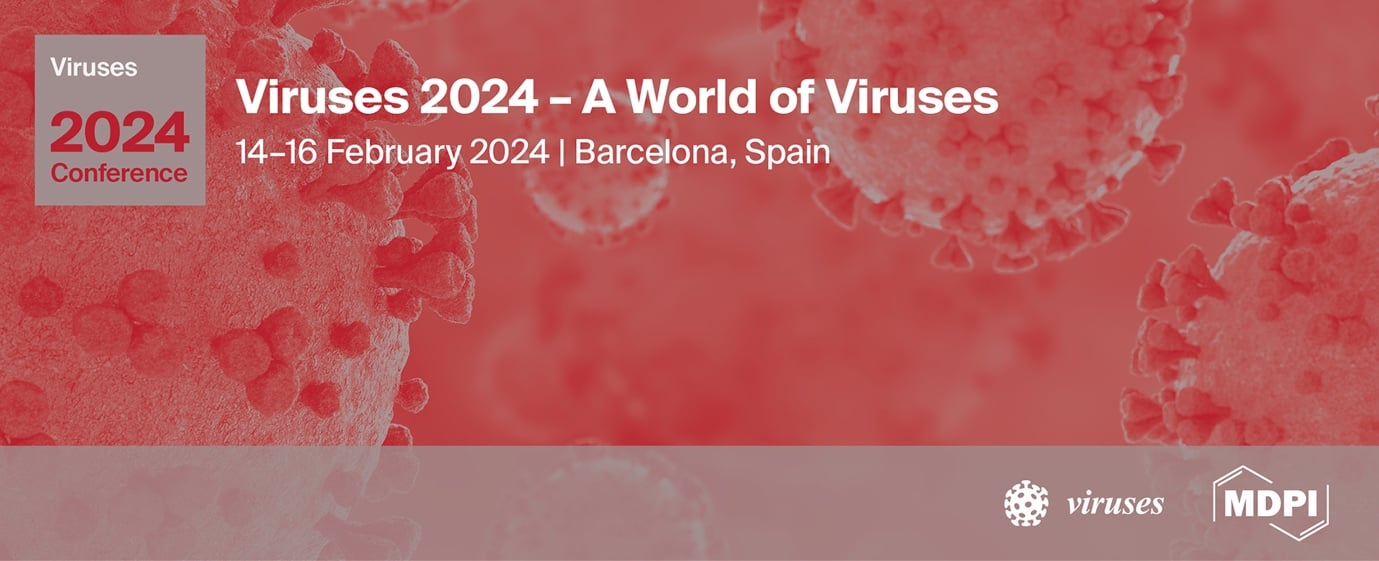
Viruses 2024 – A World of Viruses
I am pleased to share the success of our MDPI conference Viruses 2024 – A World of Viruses, held 14-16 February, in Barcelona. With 240 registrations, this event brought together top scientists, researchers, and industry experts from 40 countries to share their findings on the latest developments in viral pathogenesis and immune responses.
Attendees gathered for the 5th edition of the Viruses’ conference, where we hosted influential keynote speeches from Nobel Prize laureate Dr. Charles M. Rice and ‘Distinguished Senior Virologist’ Prof. Luis Enjuanes, along with 14 invited speakers, 47 selected speakers, and nine flash poster presenters, to discuss the most significant issues in virology today.
Recap on the #Viruses2024 Conference
Take a look at the key moments from MDPI’s Viruses event and please join us in commemorating a gathering for global knowledge and cooperation. A heartfelt thank-you to all attendees; their passion and engagement played a crucial role in making this event an engaging success!
Below are calls to action from the keynote speakers encouraging collaboration and communication:
“There’s never been a better time than now to really take the power that we have both in terms of basic research and also in biotech and pharma to develop antiviral agents.” - Dr. Charles M. Rice, The Rockefeller University, New York, USA
“The collaboration between labs is absolutely essential. Improving initial detection and improving communication is a must for all of us working in science.” - Prof. Dr. Luis Enjuanes, National Center of Biotechnology (CNB-CSIC), Madrid, Spain
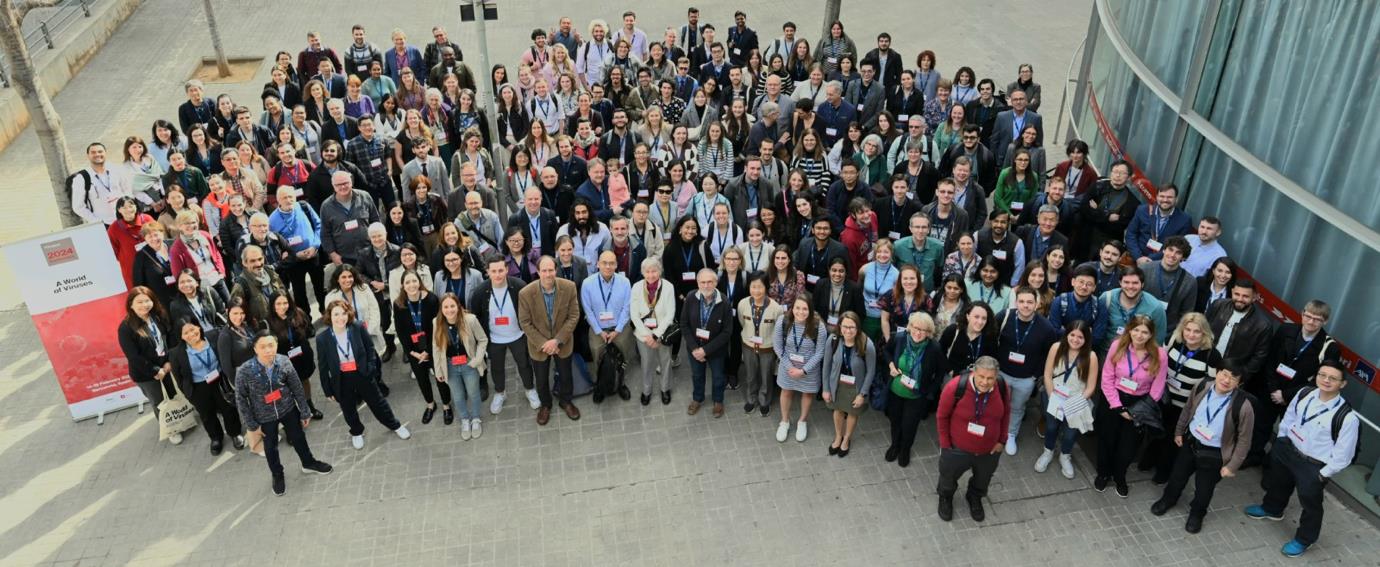
Our thanks go to our sponsors and partnering societies, our Viruses journal and editorial team, our Barcelona colleagues, and the social media, conference and other MDPI teams for making this event a memorable occasion. View the event gallery here.
Upcoming In-Person Event
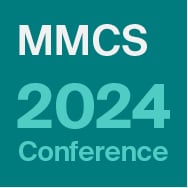
24–26 April, 2024
4th MMCS – Harnessing the Power of New Drug Modalities
Location: Barcelona, Spain
Esteemed speakers at MMCS 2024 include Prof. Arun K. Ghosh, the mind behind the Darunavir molecule, and Prof. Paul Brennan, CSO of Alzheimer's Research UK Oxford Drug Discovery Institute.
Find more upcoming MDPI events here.
Organize Your Event with MDPI’s Sciforum
Sciforum is MDPI’s platform dedicated to the organization of scientific events. In line with our mission to promote science, Sciforum supports scholars, societies, research networks, and universities at all stages of organizing in-person events, virtual events and webinars. Our platforms are efficient, user-friendly, and cost-effective. We handle all steps related to event management. Contact us for details.
Closing Thoughts

Researcher to Reader (R2R) Conference
From 20–21 February 2024, I had the pleasure of attending the Researcher to Reader (R2R) conference in London, which MDPI has proudly sponsored over the years. The conference programme offered a variety of session formats, including workshops, panel discussions, debates, interviews, presentations, and lightning talks, with opportunities to discuss relevant topics.
We take pride in supporting the scientific community, bringing researchers across the world together to network, exchange ideas and share the latest in science and publishing. In 2023, MDPI invested close to 2 million CHF in sponsoring over 2,000 scientific and publishing-related conferences worldwide.
R2R Peer Review Innovations Workshop
I found the R2R conference to be engaging, with the workshops being particularly enjoyable. My colleague Giulia Stefenelli (Chair of Scientific Office Board) and I participated in the “Peer Review Innovations” workshop, which spanned four sessions over the two days. These sessions explored the future of peer review and how we can improve the peer review process for everyone involved. Notably, the large majority of attendees expressed their opinion that peer review, as currently practiced, requires significant improvement. Together, we collaborated on potential immediate and long-term improvements and innovative processes, aiming to create an ecosystem beneficial to all stakeholders by strengthening submission systems with the aim of reducing threats and making authors more responsible for their work. We also discussed the opportunity for academic institutions to better scrutinize the quality of the work produced and submitted to journals.
Our group comprised publishers, software providers, librarians, and more, bringing diverse perspectives to the discussions. These interactions were relevant to MDPI’s ongoing conversations, providing insights to our efforts. The session also made me appreciate that MDPI is doing well, as the group discussions included the subject of various quality checks that we have already embedded in our processes, ensuring that we keep abreast of industry standards.
The need for an optimized system to incentivize the activities of editors and reviewers was also a focus of discussion, as well as the support that reviewers need from publishers via the provision of strong reports through fixed forms, questionnaires and training.
At MDPI, we are currently auditing our reviewer program to improve reviewer recognition, guidelines, and methods for identifying suitable reviewers, while maintaining our commitment to quality and timeliness.
Congratulations to Mark Carden, Conference Director, and the R2R team for organizing a productive and successful event. PS: The break times were greatly appreciated as well!
Chief Executive Officer
MDPI AG
1 February 2024
Biosensors 2024 Travel Award—Winner Announced

As Editor-in-Chief of Biosensors (ISSN: 2079-6374), I am pleased to announce the winner of the Biosensors 2024 Travel Award. The award has been granted to Dr. Shichao Ding, a postdoctoral researcher in the Department of Nanoengineering, University of California San Diego, La Jolla, USA.
Dr. Shichao Ding will attend Pittcon 2024 held in San Diego, USA, to share his research entitled “Structural Design Single-Atom Nanozyme for Sensing”.
As the awardee, he will receive an honorarium of CHF 800 and an electronic certificate.
With so many high-quality applicants, the evaluation process and final decision were challenging. We would like to thank all the applicants for submitting their diverse and fascinating range of research topics. On behalf of the assessment committee, I congratulate the winner on his accomplishments.
Prof. Dr. Giovanna Marrazza
Editor-in-Chief of Biosensors
31 January 2024
MDPI Insights: The CEO's Letter #8 - Altmetric and Flat Fee Agreement

Welcome to the MDPI Insights: The CEO's Letter.
In these monthly letters, I will showcase two key aspects of our work at MDPI: our commitment to empowering researchers and our determination to facilitating open scientific exchange.
Opening Thoughts

MDPI and Digital Science Meeting
At MDPI, we are committed to providing our authors with the essential tools to publish, promote, and track their research. In line with this commitment, we have established a longstanding collaboration with Digital Science, a company specializing in research data and analytical insights for the research community. Our collaboration integrates their Altmetric tool, offering us and our authors the ability to track a variety of sources that monitor and report attention surrounding publications.
As part of our collaboration, we recently hosted Cathy Holland, Director of Global Publisher Business Development, and Helen Cooke, Managing Director of Publisher Sales, from Digital Science, at our MDPI headquarters in Basel, Switzerland.

Left to right: Facundo Santomé (Senior Marketing Manager, MDPI), Constanze Shelhorn (Indexing Manager, MDPI), Cathy Holland (Director of Global Publisher Business Development, Digital Science), Helen Cooke (Managing Director of Publisher Sales, Digital Science), and Stefan Tochev (CEO, MDPI) in front of MDPI headquarters in Basel, Switzerland.
During our meeting, we discussed MDPI’s publishing philosophy and explored further avenues for collaboration. We look forward to continuing our partnership with Digital Science, aiming to improve our services yet further and meet the needs of our authors more closely than ever.
What is Altmetric?
You will notice that MDPI articles feature an Altmetric score, a colourful doughnut capturing the score in the upper right corner of the article page. This score represents ‘alternative metrics,’ as distinct from traditional metrics such as Impact Factor, CiteScore, and Scimago Journal Rank.
Altmetrics complement traditional citation-based metrics by capturing online discussions related to a specific research topic. By analyzing both sets of data, we can obtain a comprehensive understanding of the attention a particular research output receives and the sources in which it is mentioned.
“Almetric provides visual insights into where research is being discussed”
Sources Tracked by Altmetric
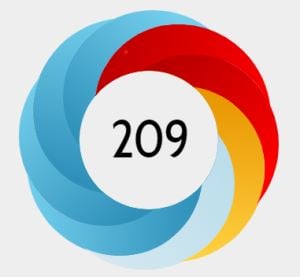
Altmetric badge showing the Altmetric score and colour-coded mention sources.
Altmetric monitors various sources, categorizing them into segments such as policy documents, peer reviews, Wikipedia, news and blogs, and social media, among other sources. Each category is identifiable by a specific colour.
The Altmetric badge provides visual insights into where the research is being discussed. A more colourful badge indicates broader mentions across multiple platforms. Such tracking enables us to gauge the extent of an article’s online dissemination, noting that increased visibility may correlate with higher citation rates.
Read more:
Impactful Research

Ten High-Altmetric Articles Published by MDPI
As at 30 January 2024, Altmetric has tracked 670,500 MDPI research outputs from MDPI, resulting in over 4.3 million mentions. This includes over 71,894 mentions in policy and patents and 294,714 mentions in news and blogs, with some achieving an Altmetric score as high as 28,754.
So, what is a good Altmetric score? There are various ways to put this score into context. You can find out more about the score in context and how to evaluate your work by this means.
Here are ten MDPI papers ranking in the top 5% of all research outputs scored by Altmetric.
|
|
“Accuracy in Wrist-Worn, Sensor-Based Measurements of Heart Rate and Energy Expenditure in a Diverse Cohort” J. Pers. Med. 2017, 7(2), 3; https://doi.org/10.3390/jpm7020003 Altmetric page: https://mdpi.altmetric.com/details/20477344 Altmetric shows that this article appeared in 253 news stories from 209 outlets including Forbes, BBC, and Fox News. |
|
|
“Daylight Saving Time and Acute Myocardial Infarction: A Meta-Analysis” J. Clin. Med. 2019, 8(3), 404; https://doi.org/10.3390/jcm8030404 Altmetric page: https://mdpi.altmetric.com/details/57654628 Altmetric shows that this article appeared in 295 news stories from 207 outlets including Forbes, The Atlantic, and New York Times. |
|
|
“The Preliminary Analysis of Cave Lion Cubs Panthera spelaea (Goldfuss, 1810) from the Permafrost of Siberia” Quaternary 2021, 4(3), 24; https://doi.org/10.3390/quat4030024 Altmetric page: https://mdpi.altmetric.com/details/111086701 Altmetric shows that this article appeared in 182 news stories from 134 outlets including CBC News, CNN, and National Geographic. |
|
|
“Not the Cat’s Meow? The Impact of Posing with Cats on Female Perceptions of Male Dateability” Animals 2020, 10(6), 1007; https://doi.org/10.3390/ani10061007 Altmetric page: https://mdpi.altmetric.com/details/83796184 Altmetric shows that this article appeared in 124 news stories from 98 outlets including VICE, CNN and The Guardian. |
|
|
“Behaviour and Welfare Impacts of Releasing Elephants from Overnight Tethers: A Zimbabwean Case Study” Animals 2022, 12(15), 1933; https://doi.org/10.3390/ani12151933 Altmetric page: https://mdpi.altmetric.com/details/133463915 Altmetric shows that this article appeared in 192 news stories from 186 outlets. |
How do I use altmetrics?
Altmetric Explorer provides a detailed step-by-step guide and instruction video for first-time users of the tool. The guide includes useful diagrams that make it easy to get started.
Sharing Research Online
For research to be tracked across different sources, Altmetric needs a research output with a persistent identifier: a DOI, ISBN, PubMed ID, handle ID, etc. When sharing research, it is important to include a link to the original research output.
|
|
“An Update on Eukaryotic Viruses Revived from Ancient Permafrost” Viruses 2023, 15(2), 564; https://doi.org/10.3390/v15020564 Altmetric page: https://mdpi.altmetric.com/details/142929875 Altmetric shows that this article appeared in 250 news stories from 180 outlets including CTV, Fox News, and CNN. |
|
|
“The Global Problem of Insufficient Sleep and Its Serious Public Health Implications” Healthcare 2019, 7(1), 1; https://doi.org/10.3390/healthcare7010001 Altmetric page: https://mdpi.altmetric.com/details/53406248 Altmetric shows that this article appeared in 252 news stories from 168 outlets including BBC, Harvard Business Review, and Forbes. |
|
|
“A Detailed Review Study on Potential Effects of Microplastics and Additives of Concern on Human Health” Int. J. Environ. Res. Public Health 2020, 17(4), 1212; https://doi.org/10.3390/ijerph17041212 Altmetric page: https://mdpi.altmetric.com/details/86529137 Altmetric shows that this article appeared in 197 news stories from 150 outlets including BBC, The Tribune, and World Economic Forum. |
|
|
“An Empirical Study of Chronic Diseases in the United States: A Visual Analytics Approach to Public Health” Int. J. Environ. Res. Public Health 2018, 15(3), 431; https://doi.org/10.3390/ijerph15030431 Altmetric page: https://mdpi.altmetric.com/details/34714141 Altmetric shows that this article appeared in 232 news stories from 149 outlets including Forbes, New York Times, and Harvard Business Review. |
|
|
“Garden Scraps: Agonistic Interactions between Hedgehogs and Sympatric Mammals in Urban Gardens” Animals 2023, 13(4), 590; https://doi.org/10.3390/ani13040590 Altmetric page: https://mdpi.altmetric.com/details/142934305 Altmetric shows that this article appeared in 172 news stories from 168 outlets including BBC. |
Inside MDPI

MDPI Annual Meeting Celebrations in China
On Thursday 25 January, over 1,300 MDPI colleagues from our two offices in Beijing gathered to kick off MDPI’s traditional ‘Annual Meetings.’ These celebrations take place in MDPI’s offices across China, including Dalian, Tianjin, Wuhan, and Nanjing.
The evenings include performances, informative talks and presentations, awards, and entertainment, providing an ideal platform to recognize our colleagues, celebrate their achievements, and set our sights on the future.
“It is essential that we stay connected and share best practices”

I sent a video congratulating everyone on their work and sharing our vision of building MDPI into the most trusted OA publisher, highlighting the roles each of us has to play in achieving that goal.
Unfortunately I could not join in person, but you may recall my recent trip, when I visited our offices in Beijing and Wuhan, which I look forward to visiting again this year.
Although our headquarters are in Basel, Switzerland, and we are expanding throughout Europe and North America, the majority of MDPI’s workforce is in China and throughout the Asia-Pacific region, including offices in Singapore, Thailand, Japan, and newly opened office in South Korea. It is essential that as a global organization, we stay connected and share best practices in order to grow collectively and continue providing the exceptional service to our authors.
The Annual Meeting is a moment to reflect and enjoy the year’s hard work and dedication.
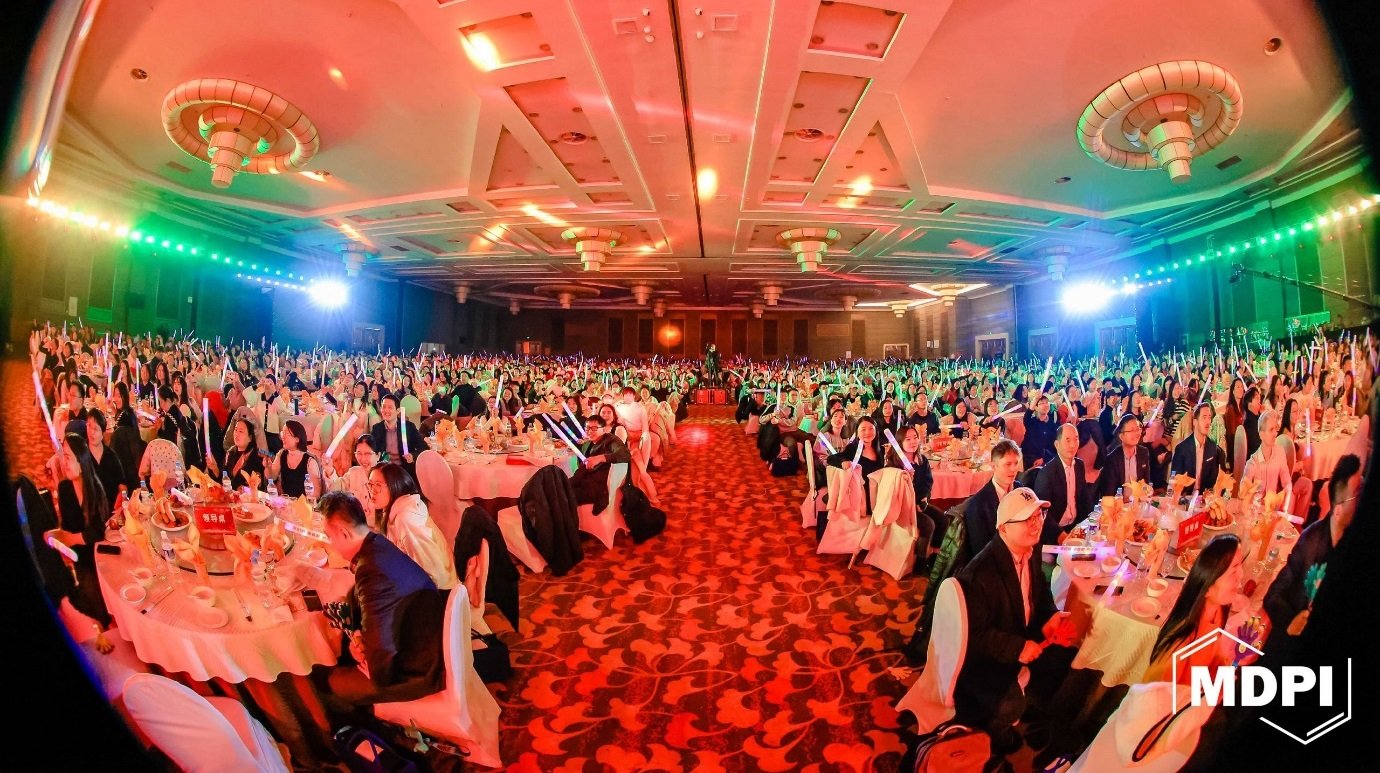
I extend our best wishes to all for the Chinese New Year (Xīnnián kuàilè)!
Coming Together for Science
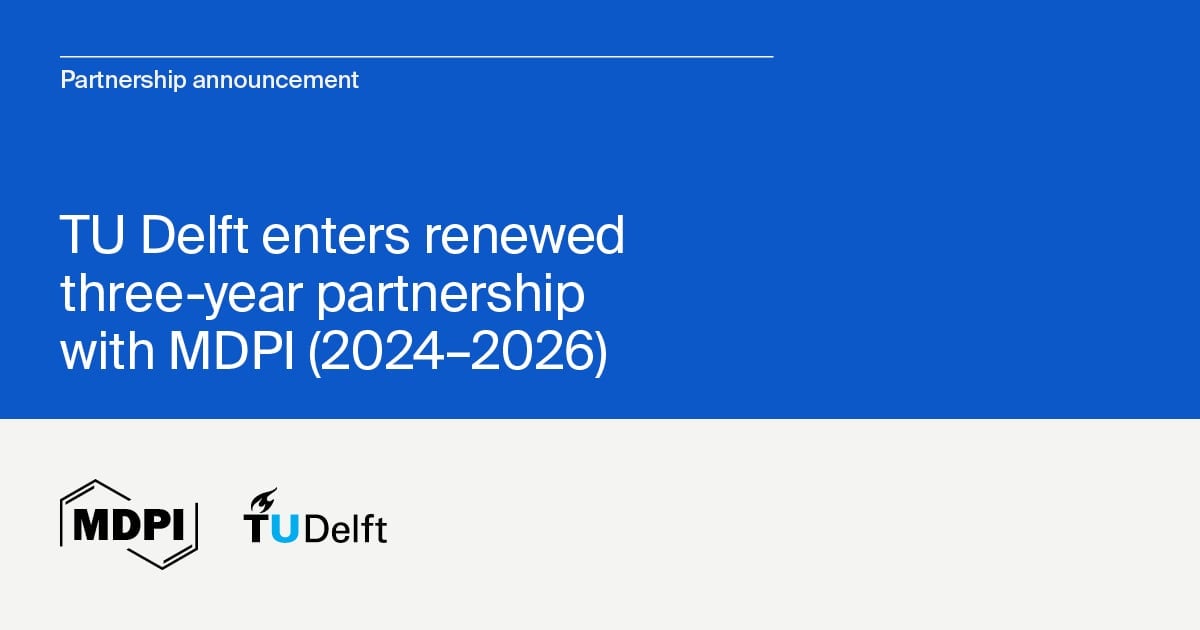
MDPI and TU Delft Adopt Flat Fee Model in Extended Partnership
We are excited to announce a renewed three-year partnership with Delft University of Technology (TU Delft) in the Netherlands. This collaboration introduces a fixed lump-sum fee, covering publishing costs from 2024 to 2026.
“This initiative reflects our dedication to transparent and inclusive publishing”
TU Delft-affiliated authors will enjoy cost-free publishing in any MDPI journal during this period, aligning with our commitment to removing barriers for open access publishing. The agreement supports Plan S compliance and facilitates a seamless publishing process for TU Delft corresponding authors. This initiative reflects our dedication to transparent and inclusive publishing, providing stability and predictability both for authors and for institutions.
For further details on our Institutional Open Access Program (IOAP), please contact us.
Benefits to MDPI’s IOAP
At MDPI we have a long tradition of partnerships, including our Institutional Open Access Program (IOAP). IOAP supports institutions through simplification, access, transparency, APC discounts, and institutional repository deposits. The program simplifies administrative processes, offers central payment, and allows easy opting in and out. Participants gain free access to Susy, MDPI’s online submission system, with extensive article metadata and exportable data. APC discounts and Book Processing Charge discounts are available for affiliated authors. Automated deposits to institutional repositories and streamlined matching of papers to IOAP participants enhance the overall experience.
For further information, see our IOAP FAQ.
Closing Thoughts

Reflections on the 2024 APE Conference
MDPI was proud to co-sponsor the Academic Publishing in Europe (APE) 2024 Conference that took place in Berlin, Germany, from 9–10 January 2024.
The conference theme, ‘Keep the Conversation Going!’, explored the evolving landscape of scholarly communication. APE is one of the key conferences I make a point to attend each year. January offers a valuable opportunity to engage with new contacts, reconnect with familiar faces, and participate in impactful discussions and presentations among professionals, scholars, and practitioners in the field.
“It's fascinating to see how other publishers are leveraging AI”
Highlights
Some of the standout panels for me include: the role of the UN Sustainable Development Goals (SDGs) within the publishing industry. It was encouraging to hear the current status quo, though I was eager also to learn about the exciting projects planned for 2024 and beyond. These will allow us to track progress in subsequent years. At MDPI, we remain committed to promoting Open–Access (OA) content on SDGs through scientific articles and books. Furthermore, we extend our commitment to sustainability by financially supporting researchers through initiatives such as the World Sustainability Award and the Emerging Sustainability Leader Award, as well as waiving the APC for feature papers on each SDG.
In recent years, discussions on AI have become increasingly prominent at such conferences. It’s fascinating to see how other publishers are leveraging AI to meet the evolving needs of their audiences while at the same time using it to safeguard the scientific process. Other engaging panels that I enjoyed included updates on transformation beyond transformative agreements, the principles of lean change, incentive structures related to research integrity, and the panel on reviewer incentives.
“We can share best practices and lessons learned”
Incorporating MDPI’s Insights into Conferences
I must confess that I sometimes feel overlooked when MDPI is not invited to participate in crucial industry discussions. As the leading open access publisher and the third-largest publisher overall, we possess extensive experience in many of these areas and can offer valuable contributions to these discussions. We can share best practices, lessons learned, and our thinking about future trajectories. For instance, in panels discussing reviewer incentives, at MDPI we offer a discount voucher to reviewers for future submissions, reflecting our commitment to fostering a robust peer review process. In 2022 alone, MDPI collected over 1.4 million peer review reports, informing the decision-making processes of our editors. Given our expertise in these areas, it would be natural to include MDPI in such discussions. I therefore extend an invitation to future conference organizers to consider MDPI for speaking engagements and collaborative opportunities.
Chief Executive Officer
MDPI AG
23 January 2024
Acknowledgment of the Reviewers of Biosensors in 2023
In recognizing the exceptional efforts of our reviewers in 2023, we express our sincere gratitude for upholding the high standards of Biosensors. Their commitment ensured the rigorous peer review that is integral to quality academic publishing.
In 2023, Biosensors received 3190 review reports, from 2257 reviewers. This past year, we worked with reviewers from 77 countries and regions, reflecting the diversity in our collaboration with research communities. Their dedication shapes scholarly discourse and advances global research. The editorial team expresses gratitude for the vital role played by each reviewer in the Biosensors family throughout 2023, and we look forward to their continued support in 2024.
The following are the reviewers who have consented to show their names:
| A. Abdul Kader Jailani | Lei Jia |
| Abdul Anwer | Li Lin |
| Abdus Sobhan | Liangqia Guo |
| Abebaw Jemere | Ligia Maria Moretto |
| Abraham Finny | Lijun Wang |
| Adányi Nóra | Lili Xing |
| Aditi Mulgaonkar | Lin Yuan |
| Afzal Khan | Long Wu |
| Agnieszka Fedoruk-Wyszomirska | Luca De Stefano |
| Ahmad Mobed | Luca Giorgi |
| Ajay Kumar Yagati | Lucas Hernández-Saravia |
| Ajeet Kaushik | Ludovic Tricoire |
| Akhil Jabbar Meerja | Luis Zamora Peredo |
| Alaa Adawy | Lukáš Fojt |
| Alberto Aloisio | Luminita Fritea |
| Alberto Battistel | Maciej Zieliński |
| Aleksandr Ivanov | Mahendra Chordia |
| Aleksey Arsenin | Mahmoud Tabrizi |
| Alesandr Krasnov | Maik Jacob |
| Alessandra Maria Bossi | Maksim Burkin |
| Alexander Khomich | Makusu Tsutsui |
| Alexander Lomzov | Manel Del Valle |
| Alexander Martynov | Mansi Gandhi |
| Alexander Meigal | Marcos Teixeira |
| Alexander Pisarchik | Marek Bryjak |
| Alexandros Katranidis | Maria Brzhezinskaya |
| Alexey Markin | Maria I. Pilo |
| Alice Witney | María Isabel Lucío |
| Aliza Aini Md Ralib | Maria Jesus Lobo-Castañón |
| Alok Pandya | Maria King |
| Ambra Giannetti | Maria Lepore |
| Amer Charbaji | Mariana Emilia Ghica |
| Amid Shakeri | Marina Holyavka |
| Amirmostafa Amirjani | Marioara Avram |
| Amit Nautiyal | Marit Nilsen-Hamilton |
| Anahita Izadyar | Mark Tarn |
| Anatoly Zherdev | Martín A. Fernández Baldo |
| András Dér | Martina Banchelli |
| Andrea Mescola | Martina Gilić |
| Andreas Seifert | Masoumeh Ghalkhani |
| Andrei Bunaciu | Mathias Dolci |
| Andrei Potapov | Matteo Sensi |
| Andrei Sarbu | Mattia Miotto |
| Andrey Briko | Max Gong |
| Andrey G. Cherstvy | Maysam Abbod |
| Andrzej Kudelski | Md Abu Zahed |
| Angel Orte | Md Eshrat E. Alahi |
| Angeliki Brouzgou | Meenakshi Sharma |
| Angelo Ferlazzo | Mehdi Dadmehr |
| Angelo Sassaroli | Mehmet Senel |
| Anisha Pathak | Meisheng Wu |
| Anna Dembska | Mengyan Nie |
| Antonella Curulli | Meysam Keshavarz |
| Antonella Virgilio | Michael Arkas |
| Antonino Scandurra | Michael Beck |
| Antonio Abad-Fuentes | Michael C. Leopold |
| Antonio Fortunato | Michael Weller |
| Anushka Gupta | Michał Dudek |
| Arjun Mohan | Miguel Peixoto De Almeida |
| Arkady Karyakin | Mihaela Gheorghiu |
| Artem E. Shitikov | Mihaela-Violeta Ghica |
| Arun Kumar | Mikhail Proskurnin |
| Ashish Kalkal | Mikhail Ryazantsev |
| Ashish Kumar | Mikhail Tsurkan |
| Ashutosh Sharma | Mindy Levine |
| Astam Patra | Mingliang Li |
| Axel Günther | Mingyu Li |
| Ayemeh Bagheri Hashkavayi | Mireia Baeza |
| Badariah Bais | Mirjana Čolović |
| Bernardo Patella | Miroslav Gál |
| Bhausaheb Dhokale | Miroslav Pohanka |
| Binfeng Yin | Mohamed Boutaayamou |
| Bing Sun | Mohamed S. A. Darwish |
| Bo Wang | Mohamed Salaheldeen |
| Bogdan Oancea | Mohammad Rezapour |
| Bogdan Tutunaru | Mohammadhassan Valadan |
| Boris Dzantiev | Mohana Rani Gokana |
| Boris Khlebtsov | Mohd Imran |
| Bouayad Noureddin | Monica Florescu |
| Brian D. Plouffe | Moon-Sung Kang |
| Brigitte Bruijns | Morteza Hosseini |
| Burcu Gumuscu | Mostafa Kamal Masud |
| Carlos Fo Graeff | Mostafa Shooshtari |
| Carlos Torres-Torres | Muhammad Ali Butt |
| Cassandra Terry | Mun'delanji Vestergaard |
| Cecilia Jimenez-Jorquera | Mustafa Hikmet Bilgehan Ucar |
| Changchen Zhao | Nan-Fu Chiu |
| Chia-Chen Chang | Nataliya Belskaya |
| Chiwan Koo | Nathan Lindquist |
| Choo Yee Yu | Negut Catalina |
| Christabel Tan | Neng-Hui Zhang |
| Christoph Anders | Nicola Borbone |
| Christoph Hintermüller | Nicolás Laguarda-Miró |
| Christopher Pöhlmann | Nicolò Lago |
| Christos Argirusis | Nidhi Nandu |
| Christos P. Antonopoulos | Nikolai Dontschuk |
| Cinzia Caliendo | Ning Wang |
| Cristina Potrich | Niravkumar Joshi |
| Cunguang Lou | Noemí de-los-Santos-Álvarez |
| Daeyoung Kim | Norazriena Yusoff |
| Da-Hua Wei | Oleg Yaroshchuk |
| Daixin Ye | Oleh Smutok |
| Dana Elena Popa | Olga Cherkasova |
| Daniele Tosi | Olga Goryacheva |
| Danilo Boskovic | Olga Korostynska |
| Danling Wang | Olgica Nedic |
| Dapeng Peng | Omid Akhavan |
| Darya Klyamer | Omobosede Fashedemi |
| David Winkler | Ornella Maglio |
| De-Li Shi | Özhan Şimşek |
| Denis Garoli | Palani Elumalai |
| Despina Kalogianni | Panagiotis Kounavis |
| Dhiraj Bhatia | Paolina Crocco |
| Dirk Tuma | Paolo Visconti |
| Divagar Murugan | Parvaneh Rahimi |
| Dmitry Gryadunov | Patricia Batista Deroco |
| Dmitry Markov | Patricia de la Presa |
| Donato Luna Moreno | Paul Rösch |
| Dong-Jin Lee | Paulina Sierra-Rosales |
| Dong-Shik Kim | Pavel Demakov |
| Dóra K. Menyhárd | Pavel Kopel |
| Dujuan Li | Pavel Padnya |
| Dzmitry Yakimchuk | Pedja Mihailovic |
| Edoardo De Tommasi | Pierpaolo Greco |
| Edson Roberto Santana | Pierre Boulanger |
| Egan Doeven | Piyanut Pinyou |
| Egor Verbitskiy | Pradip Bhowmik |
| Elba Mauriz | Pramod Gupta |
| Elena Daboss | Principia Dardano |
| Elena Dilonardo | Qi Chen |
| Elena Zavyalova | Qi Shao |
| Elizaveta Ermakova | Quanguo He |
| Emad Newair | Radoslaw Podsiadly |
| Emerson Ribeiro | Radu Racovita |
| Emiliano Martínez-Periñán | Raheel Ahmad |
| Emilio Olías-Ruiz | Rahul Gangwar |
| Emmanuele Crespan | Rahul Gauttam |
| Emre Ozan Polat | Rajavel Krishnamoorthy |
| Enrique Hernández-Balaguera | Rajeev Yadav |
| Eric Bourillot | Raji Atchudan |
| Eric Gil | Ralph Holzel |
| Erin Patrick | Ramin Yousefi |
| Evangelia Sarantopoulou | Ramkumar Sivasakthivel |
| Fabio Di Nardo | Raquel Gavara |
| Fabio Zobi | Rebeca Miranda-Castro |
| Fabrice Sthal | Rodrigo Machado |
| Fang-Cheng Liang | Rokas Zalneravicius |
| Fangkai Han | Rudolf J. Schneider |
| Fariborz Parandin | Ruilin Liu |
| Farid Harraz | Runze Li |
| Fátima Bento | Russell Reid |
| Fedor Gubarev | Sadaf Bashir Khan |
| Filipe Alves | Sagnik Basuray |
| Fleming Gudagunti | Sajid Rauf |
| Francesca Costantini | Saleh Mahmoud |
| Francesca Leonardi | Salvador Gil |
| Francisco Armijo | Sameer Hussain |
| Frederic Melin | Sanaz Alamdari |
| Gaia Rocchitta | Sandeep Arya |
| Galina Karpacheva | Sandip Ghuge |
| Gefeson Pacheco | Saniye Söylemez |
| Georg Fischer | Sanju Gupta |
| Gergana Nestorova | Sara Tombelli |
| Gergely Nagy | Sebania Libertino |
| Gesmi Milcovich | Sebastian Andres Diaz |
| Giaan Arturo Álvarez-Romero | Semra Akgönüllü |
| Gianluigi De Gennaro | Sergey Dubkov |
| Gilbert Berben | Sergey Sekatskii |
| Gilliard Malheiros-Silveira | Sergey Simakov |
| Gintautas Bagdziunas | Sethupathi Velmurugan |
| Giorgio Pennazza | Sevinc Kurbanoglu |
| Giorgio Rispoli | Seyed Mohammad Amini |
| Giulio Mengozzi | Seyyed Mehdi Khoshfetrat |
| Giuseppe Brunetti | Shaopeng Wang |
| Giuseppe Maruccio | Sharmili Roy |
| Giuseppe Trusso Sfrazzetto | Sheila Sadeghi |
| Gleb Tselikov | Shengxi Chen |
| Gleiston Dias | Shiba Dandpat |
| Gourav Bhattacharya | Shinya Ikeno |
| Govindhan Maduraiveeran | Shivam Gupta |
| Grazia Iadarola | Shulin Wan |
| Guillermo Copello | Shuo Liu |
| Gulshan Verma | Shuping Wu |
| Gunawan Indrayanto | Simona Liliana Iconaru |
| Guo-Cheng Han | Simona Mirel |
| Gustavo Fuertes | Simonas Ramanavičius |
| Hafsa Korri-Youssoufi | Simone Luigi Marasso |
| Hailong Qiu | Sivashankar Krishnamoorthy |
| Haixiang Yu | Siyuan Zhao |
| Hamed Barabadi | Slawomir Jakiela |
| Hamidreza Habibiyan | Sobhan Roshani |
| Hanne Diliën | Sobia Niazi |
| Hans Peter Lang | Sofia Lima |
| Hans-Joachim Krause | Song Gao |
| Harikumar Rajaguru | Songbai Zhang |
| Hariprasath Manoharan | Sónia Pereira |
| Hemraj Yadav | Sriram Balasubramanian |
| Hengyi Xu | Stavros Poulopoulos |
| Herbert Heise | Stefano Bettati |
| Heyu Yin | Stefano Bonaldo |
| Hiroyuki Furusawa | Stefano Pisa |
| Honghe Liu | Stéphane Carlier |
| Hsiao-Mei Wu | Subrata Mondal |
| Huan Pang | Sujoy Ghosh |
| Hugo De Lasa | Sulev Kõks |
| Hugo M. Oliveira | Sumit Sachdeva |
| Ibrahim Alsohaimi | Suneetha Vuppu |
| Igor Buzalewicz | Sung-Min Kang |
| Igor Kovalev | Suruchi Poddar |
| Igor Oscorbin | Susana Catarino |
| Ileana Alexandra Pavel | Susanta Kumar Bhunia |
| Iman Yazdi | Suvendu Biswas |
| Irina Ionica | Svetoslav Dimov |
| Iulia Antohe | Syed Muzahir Abbas |
| Iva Chianella | Takeshi Naganuma |
| Ivan Brandslund | Tamara Lazarevic-Pasti |
| Ivan Stoikov | Tamás Mészáros |
| Iwona Grabowska | Tanmay Kulkarni |
| Izabell Craciunescu | Tayyaba Iftikhar |
| Jaehyuck Jang | Tianhao Yu |
| Jagadeesh Suriyaprakash | Tigran Vartanyan |
| Jandeep Singh | Tirayut Vilaivan |
| Jasmine Devadhasan | Tomasz Szymborski |
| Jason Beech | Toshiyo Tamura |
| Javier Manrique | Tutku Beduk |
| Jens Dernedde | Umapathi Reddicherla |
| Jenu Chacko | Uroš Tkalec |
| Jeungchan Lee | Valentina Di Meo |
| Jia Sheng | Valérie Gaudin |
| Jiajie Chen | Valerio Giustino |
| Jianmin Zhang | Vasanthan Devaraj |
| Jin Li | Veli Ozalp |
| Jinchun Tu | Venkata Narayana Palakollu |
| Jing Neng | Venugopal Rao Soma |
| Jing Qin | Vinu R. V. |
| Jingfeng Huang | Viola Horvath |
| Jin-Ha Choi | Vivaldo Gomes Da Costa |
| Jinjun Xia | Vladimir Ivanov |
| Jin-Wu Yan | Vladimir Plyuta |
| Joan Bausells | Vladimir Zaitsev |
| Joana Costa | Vlastimil Matejec |
| João Pacheco | Wan-Feng Xie |
| João Paulo Winiarski | Wanhe Wang |
| Joaquim C. G. Esteves da Silva | Wanwei Qiu |
| Joerg Fitter | Weijin Guo |
| John Stanley | Weilong Shi |
| Joong Ho Shin | Wenxin Zhu |
| Jose Manuel Almeida | Wilfrid Boireau |
| José Ramiro Fernandes | Wilhelm Baader |
| José Villar | Xavier Vilanova |
| Joshua A. Jackman | Xia Wang |
| Juan Arturo Squella | Xiaodong Zhou |
| Jun Hui Park | Xiaolin Nan |
| Kaan Kececi | Xiaoquan Lu |
| Kai Dong | Xiaoyan Liu |
| Kai Yan | Xin Cui |
| Kamil Reza Khondakar | Xinye Chen |
| Kamyar Khoshnevisan | Xuwei Chen |
| Kang Cui | Yale Wang |
| Kang Tu | Yan Kazakov |
| Kashif Shamim | Yan Man |
| Kavirajaa Pandian Sambasevam | Yang Jun Kang |
| Kawsar Ahmed | Yanjun Liu |
| Kazuo Katoh | Yanyan Cui |
| Keisuke Ishizawa | Yanyu Yang |
| Ke-Lin Du | Yolanda Moliner |
| Kenta Iitani | Yong Chen |
| Kevin Ita | Yosi Shacham |
| Khalil Tamersit | Young-Hun Jeong |
| Ki Soo Park | Yuki Hiruta |
| Koyappayil Aneesh | Yukun Yang |
| Krishna Kant | Yuriy V. Knyazev |
| Krzysztof Brzezinski | Yury Orlovskiy |
| Krzysztof Dołowy | Yusuke Kanno |
| Kun Li | Zahra Lotfollahi |
| Kunyan Zhang | Zenon Lukaszewski |
| Ladislav Kalvoda | Zhaohui Li |
| Lanhua Liu | Zhengwei Huang |
| Laura Cubillana-Aguilera | Zhuangjian Liu |
| Le Minh Tu Phan | Zoran Djinovic |
| Leandro Merces |
2 January 2024
MDPI Insights: The CEO's Letter #7 - Nobel Laureates Entrust MDPI with Their Research

Welcome to the MDPI Insights: The CEO's Letter.
In these monthly letters, I will showcase two key aspects of our work at MDPI: our commitment to empowering researchers and our determination to facilitating open scientific exchange.
Opening Thoughts
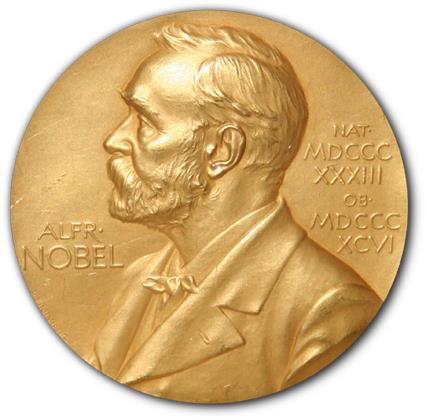
Nobel Prize Laureates Entrust MDPI with Their Research
The Nobel Prize stands as a hallmark of distinction, honouring ground-breaking research across disciplines. Annually, the Nobel Prizes are awarded in six categories: Physics, Chemistry, Medicine or Physiology, Literature, Peace, and Economic Sciences.
Through the years, renowned scholars have entrusted MDPI with their work. As at December 2023, 26 Nobel laureates have contributed to more than 75 articles across 25 MDPI journals, including: Antibiotics, Applied Sciences, Biology, Biomedicines, Cancers, Catalysts, Cells, Crystals, Entropy, Games, IJMS, Life, Materials, Micromachines, Molecules, Pharmaceuticals, Pharmaceutics, Photonics, Quantum Beam Science, Remote Sensing, Sensors, Solids, Universe, Vaccines, and Viruses.
The best of the best trust us with their work.
Nobel Prize Laureates Who Have Published with MDPI
We are proud to list the names of Pierre Agostini, Hiroshi Amano, Werner Arber, Aaron Ciechanover, Robert H. Grubbs, Oliver Hart, Gerard ‘t Hooft, Michael Houghton, Harald zur Hausen, Katalin Karikó, Jean-Marie Lehn, Gérard Mourou, Ferid Murad, Shuji Nakamura, William Nordhaus, Kostya S. Novoselov, Giorgio Parisi, Charles M. Rice, Alvin E. Roth, Donna Strickland, K. Barry Sharpless, George F. Smoot, Anne L’Huillier, Drew Weissman, Kurt Wüthrich, Ada Yonath.
The privilege of hosting such contributors resonates deeply with our editorial teams. For instance, in this interview, the Editor-in-Chief (EiC) of Universe speaks on the significance of publishing a paper by Nobel laureate Gerard ’t Hooft within the journal.
2023 Nobel Prize Winners Published by MDPI
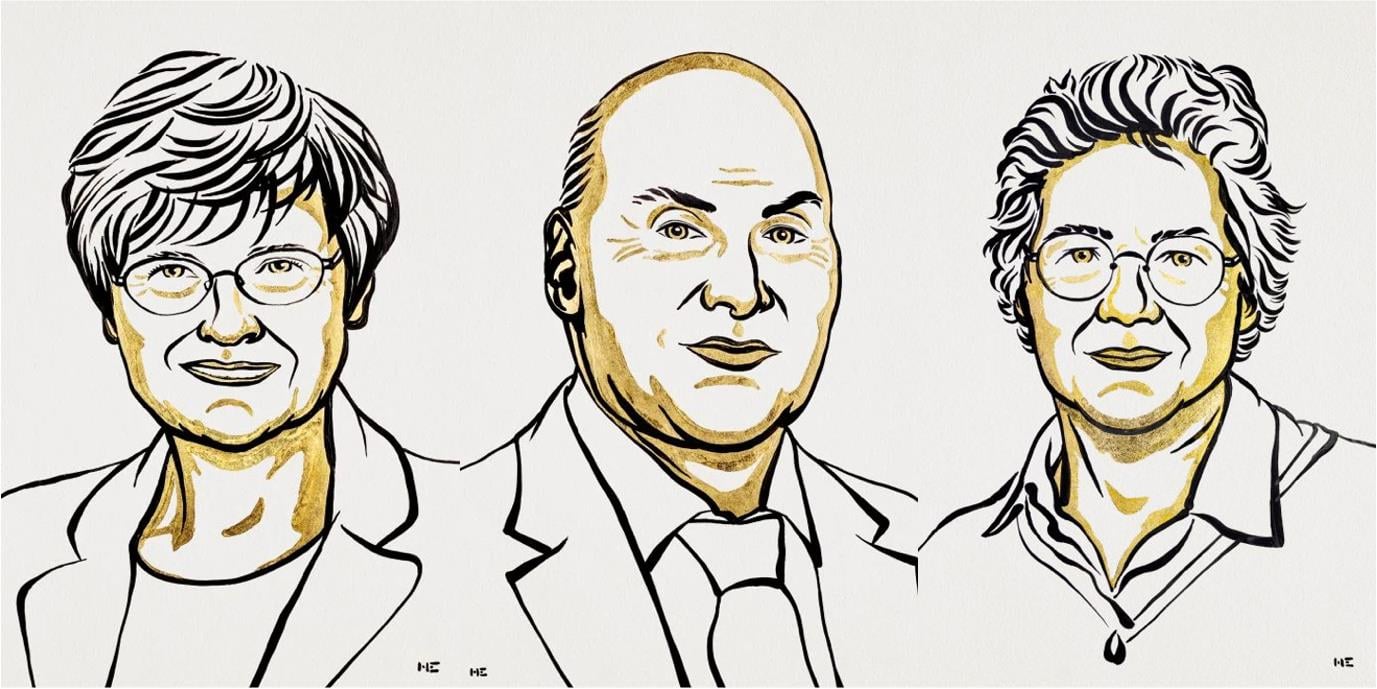
Nobel Prize Winners, 2023: Katalin Karikó, Drew Weissman, Anne L’Huillier (Ill. Niklas Elmehed © Nobel Prize Outreach)
Three laureates from the 2023 Nobel Prize cohort have trusted MDPI as their publishing platform. Notably, in a 2022 Pharmaceutics paper, molecular biologist Katalin Karikó and her team presented a methodology for evaluating mRNA capping efficiency, pivotal for therapeutic applications. Pharmaceutics had previously dedicated a Special Issue to “mRNA Therapeutics: A Themed Issue in Honor of Professor Katalin Karikó”, spotlighting ten articles from August 2021 to February 2022.
In the journal Vaccines, Professor Drew Weissman, collaborating with scholars from Pennsylvania University and George Mason University, contributed an influential review titled “Nanomaterial Delivery Systems for mRNA Vaccines”. His collaborative efforts spanned five papers across MDPI journals between 2021 and 2023.
Furthermore, Anne L'Huillier of Lund University, only the fifth female recipient of the Physics Prize, co-authored an article in Applied Sciences focusing on "Advanced EUV and X-Ray Optics". Similarly, Pierre Agostini, an Emeritus Professor from Ohio State University, co-authored an article featured in the special issue "Attosecond Science and Technology: Principles and Applications".
We extend heartfelt congratulations to all Nobel Prize laureates and express sincere gratitude for their confidence in MDPI as a platform for their scholarly contributions.
Read more:
Impactful Research

MDPI Journals Newly Indexed in 2023
The aim of indexing is to enhance the quality and credibility of published research, ensuring that researchers access the most credible resources available. While the principle behind citation indexing is straightforward, it remains one of the most dependable methods for tracking an idea's evolution across various scientific disciplines.
Throughout the year, MDPI works to expand the reach of our publications across premier multidisciplinary databases like Web of Science, Scopus, EBSCO, and ProQuest. This initiative is spearheaded by MDPI's Indexing team, under the leadership of Dr. Constanze Schelhorn.
In 2023, MDPI achieved 54 new acceptances in Scopus, 29 in Web of Science, 52 in EBSCO, and 83 in DOAJ: Directory of Open Access Journals.
The team prioritizes ensuring that our journals feature in numerous specialized databases, including PMC, PubMed, MEDLINE, Inspec, CAS, and FSTA, among others. Currently, MDPI collaborates with over 65 renowned international databases, consistently enhancing our database affiliations annually.
MDPI’s journals are indexed in all major global databases.
Furthermore, we collaborate with universities and government organizations to list our journals in country-specific ranking lists and relevant institutional repositories. This ensures compliance with requirements often set by funders or institutions for authors to publish in specific journals.
Web of Science Adds 24 MDPI Journals to Emerging Sources Citation Index (ESCI)
Clarivate recently analysed MDPI’s new journals, resulting in 24 journals, mainly established in 2020, being added to the ESCI in November and December 2023. Additionally, five journals passed this assessment earlier in the year. For a complete list of our journals in Web of Science, refer here. Journals in the ESCI meet 24 quality criteria, ensuring editorial rigor. They may be considered for inclusion in broader indices like the Science Citation Index Expanded (SCIE), the Social Sciences Citation Index (SSCI), or the Arts and Humanities Citation Index (AHCI), based on four impact criteria.
Read more:
Inside MDPI

MDPI Appoints New Chief Operating Officer (COO)

Alistair Freeland returned to MDPI and assumed the role of Chief Operating Officer in November 2023, a position he previously held from 2013 to 2019. He succeeds Dr. Yu Lin, who will remain a member of MDPI’s Board of Directors, overseeing significant financial decisions for the company. I would like to express my sincere thanks to Dr. Yu Lin for his service as COO.
Alistair brings extensive experience not only in scholarly publishing but also in technology and business management. Prior to rejoining MDPI, he was associated with SIX Group, the entity responsible for Switzerland's financial market infrastructure. There, he played a pivotal role in developing the blockchain-based platform SDX (SIX Digital Exchange), which has gained traction among major Swiss banks and the Swiss National Bank.
As COO, Alistair will collaborate with the MDPI management team to improve the practices and services we offer to scholarly communities. I am pleased to welcome Alistair back to MDPI and look forward to his contributions going forward.
Coming Together for Science

MDPI’s 2024 In-Person Academic Events Schedule
MDPI's Conference Team is dedicated to organizing and hosting in-person academic events across Europe, Asia-Pacific, and North America. We recognize conferences as invaluable platforms for scientific collaboration, scholarly exchange, discussions on contemporary topics, networking, and forging collaborations.
Here's a glimpse of the notable events we currently have scheduled for 2024:
|
|
14–16 February, 2024 |
|
|
24–26 April, 2024 |
|
|
28–31 May, 2024 |
|
|
1–4 August, 2024 |
Upcoming events with details to be announced:
- September 2024, Materials 2024 – Basel, Switzerland
- 19–21 September 2024, International Conference on Nanomaterials Sciences 2024 – Beijing, China
- October 2024, ncRNA 2024 – Basel, Switzerland
- November 2024, Pharmaceuticals 2024 – Barcelona, Spain
- 22–26 November 2024, International Conference on Science of Electronics – Wuhan, China
- Stay tuned for more details on the Sustainable Publishing Forum 2024.
Click here for all upcoming MDPI events.
Organize Your Event with MDPI’s Sciforum
Sciforum is MDPI’s platform dedicated to the organization of scientific events. In line with our mission to promote science, Sciforum supports scholars, societies, research networks, and universities at all stages of organizing in-person events, virtual events and webinars. Our platforms are efficient, user-friendly, and cost-effective. We handle all steps related to event management. Contact us for details.
Closing Thoughts

Reflecting on 2023 and Looking Ahead to 2024
As we approach 2024, I reflect on the incredible journey we’ve had together at MDPI this year. The past 12 months have been marked by ambitious projects and initiatives to improve our internal processes, and a commitment to continue delivering top-notch services to our stakeholders. I’d like to thank each and every one of our staff members for contributing to the positive experiences our stakeholders have reported in our surveys. Your dedication to speed, efficiency, and effective communication with our stakeholders is very much recognized and appreciated.
Becoming a stronger organisation
While we have encountered challenges in 2023, it’s important to understand that these are a part of our growth process. Difficulties provide us with opportunities to reflect, address problems at their roots, and ultimately evolve into a stronger organization. Our stakeholders expect us to overcome tough times, and it’s an expectation that we have for ourselves.
I extend my sincere appreciation to every MDPI employee, from our editorial office and IT department to marketing, indexing, IOAP, societies, Scientific Office board, products, production, conferences, finance, operations, admin, and beyond. To our newest team members, a warm welcome; to our longstanding colleagues, your dedication is invaluable.
“I am committed to taking MDPI to a new level of excellence.”
Interacting with many of you during my visits to our offices and representing MDPI at external events has been a personal highlight. I am deeply grateful to Dr. Lin for entrusting me with the role of CEO of MDPI. Looking forward, I am committed to working closely with our management team to lead MDPI and take it to a new level of excellence, aiming to establish it as the most trusted publisher in open access worldwide. This is a collective endeavour, with each of us shaping MDPI’s reputation. I therefore encourage us to take pride in our work, as it represents not only our craft but also MDPI as a whole.
Accountability and communication
As we look forward to 2024, there’s a lot to be excited about. Together, we’ll navigate challenges, seize growth opportunities, and refine our practices. To solidify MDPI’s position as the premier open access publisher globally, we must bolster accountability, improve stakeholder communication, share MDPI’s best practices, champion the open access philosophy, and educate stakeholders about our mission, methodologies, and motivations.
Thank you for engaging with the CEO Letter over the past six months of 2023. I will continue to release this newsletter as a method of sharing the great work being done at MDPI. Please feel free to connect directly with any insights or questions.
Here’s to a joyous and prosperous 2024!
Chief Executive Officer
MDPI AG
25 December 2023
Meet Us at the International Conference on Nanomedicine and Nanobiotechnology (ICONAN 2024), 15–17 January 2024, Barcelona, Spain

Nanomedicine and nanobiotechnology have tremendous potential for tomorrow’s patient care in a wide variety of disease management, and numerous theoretical concepts are currently being translated into preclinical and clinical studies. The fifth edition of the ICONAN conference brings together high-profile plenary speakers and world-class researchers who have successfully developed and translated nanomedicines over the last decades, offering a vibrant platform for oral and poster presentations, sponsor exhibits, and networking. The conference topics include targeted drug delivery, organ biodistribution and nanocarriers, nanomedicine for the immune system and cancer diagnosis and therapy, biological and medical nanodevices and biosensor 3D models, tissue engineering and regenerative nanomedicine toxicology, risk assessment of nanomedicine systems nano-imaging for diagnosis, etc.
MDPI will attend the International Conference On Nanomedicine And Nanobiotechnology (ICONAN 2024); we welcome researchers from different backgrounds to visit and share their latest ideas.
The following MDPI journals will be represented:
If you plan to attend this conference, please contact us online. Our delegates look forward to meeting you in person and answering any questions that you may have. For more information about the conference, please visit the following website: https://premc.org/conferences/iconan-nanomedicine-nanobiotechnology/.
30 November 2023
MDPI Insights: The CEO's Letter #6 - MDPI Spain Summit and ResearchGate

Welcome to the MDPI Insights: The CEO's Letter.
In these monthly letters, I will showcase two key aspects of our work at MDPI: our commitment to empowering researchers and our determination to facilitating open scientific exchange.
Opening Thoughts

MDPI Spain Summit

Stefan Tochev (CEO, MDPI) gives the opening speech at the MDPI Spain Summit.
On Friday 10 November 2023 I was in Barcelona, Spain, to deliver the opening presentation and participate in a panel at MDPI’s Spain Summit, a two-day event, inspired by our salon events in China.
With 16 Editors-in-Chief (EiCs) and 20 Editorial Board Members (EBMs) in attendance, the event, organized by our conference team and Barcelona office, featured presentations on open access (OA), MDPI, and publishing market trends in Spain.
The event provided a great opportunity to engage with stakeholders from various MDPI journals, including Nutrients, Vaccines, Buildings, IJMS, and others. We were able to gather feedback and have open conversations around manuscript quality, the peer-review process, and journal development, as well as accreditation agencies.
The main objective of this Summit was to bring together Editors representing MDPI journals across various disciplines within Spanish universities and research centers, primarily from the Barcelona area. The aim was to facilitate an open and fruitful discussion regarding the development of their journals, the future of OA in Spain, and to provide meaningful interactions and networking opportunities.
Connecting with Editorial Board Members

Stefan Tochev in conversation with Summit participants: "Our EBMs are passionate about the journals they serve."
Interacting with our EBMs in person provides a valuable opportunity to show how important it is to us to connect with them, hear their perspectives on their journals and learn more about their own experience collaborating with MDPI.
From my conversations, it was clear that our EBMs are passionate about the journals they serve. I know the advice they provide may sometimes involve just small tweaks, but these can lead to important improvements. As the saying goes, small hinges swing open big doors.
As at November 2023, MDPI has over 6,300 EBMs affiliated with Spanish institutions, with more than 30 of them serving as EiCs or section EiCs. Furthermore, over 68,000 Spanish scholars have contributed as reviewers in MDPI journals.
Open Access in Spain
In 2023, Spain implemented legislation mandating immediate OA for all publicly funded research, aligning with the EU’s Plan S initiative to expedite the transition to OA. The Spanish government also approved a four-year, €23.8 million annual budget for the first national OA strategy, aiming to make publicly funded research freely accessible upon publication. This strategy aims to strengthen the quality and transparency of research in Spain, and to help promote movement towards a digital, low-carbon economy.
For further details of Spain's OA policy and the history of government mandates, click here.
Spain has already seen a notable decline in subscription-only articles, decreasing by 62% over a 10-year period, while gold OA increased by 42%. Green OA slightly decreased, suggesting a shift towards publishing in gold OA journals rather than traditional subscription-based ones. Here are some statistics from Scopus.
A big thank-you to the various MDPI teams, including our conference team and the Barcelona office, for organizing this very successful event!
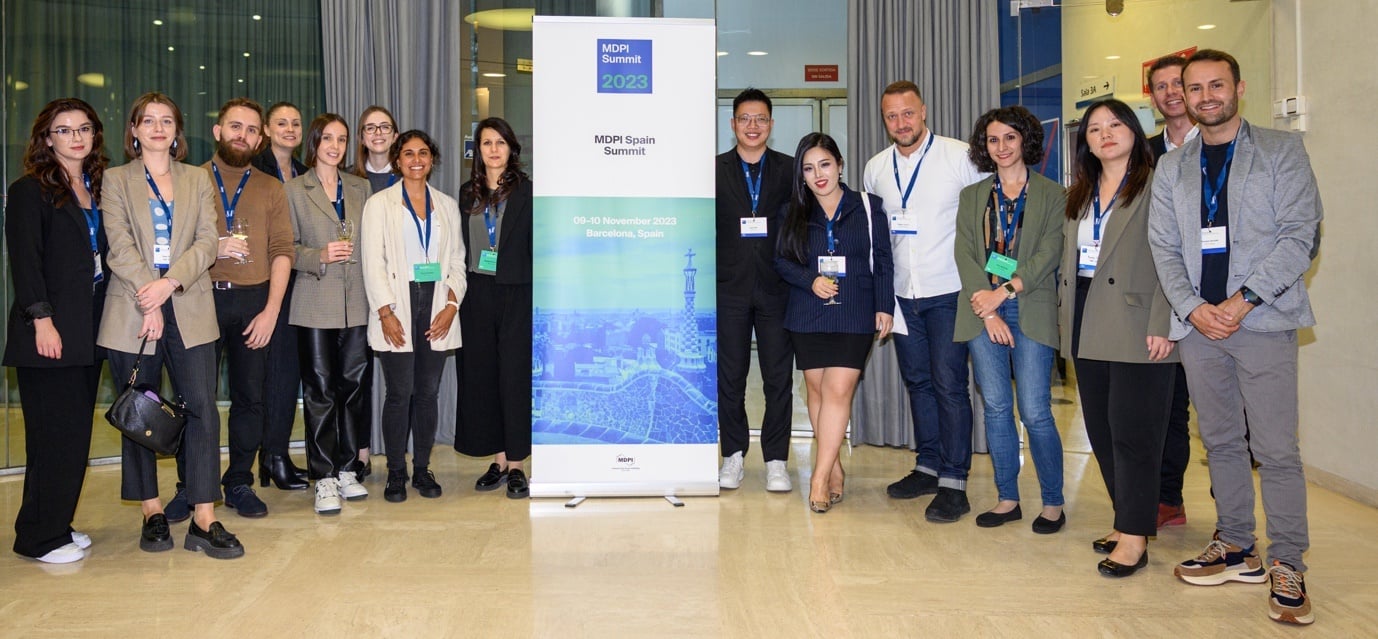
MDPI colleagues from various offices gathered to host and support the first MDPI Spain Summit, in Barcelona, Spain.
I think this type of gathering has the potential to become an annual event in various locations. For example, Manchester could be an option, as we have over 30 EiCs and over 3,000 EBMs in the UK, a top market for MDPI that publishes high-quality research.
Impactful Research

769 Editorial Board Members of MDPI Journals Recognized as Highly Cited Researchers in 2023
Congratulations to our 769 Editorial Board Members from 40 countries/territories who have been awarded Highly Cited Researcher status for 2023 by Clarivate. This recognition is based on their outstanding scientific research contributions and significant influence in various fields, as evidenced by Web of Science data.
Click here to view the full list of 769 Editorial Board Members.
Clarivate's Highly Cited ResearchersTM list identifies individuals with exceptional impact in scientific and social science domains over the past decade. Their papers rank in the top 1% of citations in 21 fields analysed in ‘Essential Science Indicators,’ showcasing their substantial influence.
This year, 7,125 Highly Cited Researcher 2023 designations were issued to 6,849 individuals from 67 countries, representing just 1 in 1,000 researchers worldwide.
These researchers demonstrate exceptional influence, representing a small fraction of contributors pushing the boundaries of knowledge, contributing to global well-being, sustainability, and security.
Congratulations to these scholars for their remarkable achievement: we are honoured to have them on board with our journals!
Inside MDPI

Corporate Marketing and Communications Strategy Session

Members of MDPI’s Corporate Marketing & Communications team.
For the past few years, I have led the Corporate Marketing & Communications department in our annual strategy session.
This typically involves 2–3 days of focused sessions covering key topics including budgeting, hiring targets, campaign reviews, and planning for the upcoming year, department strategy, and structure.
We are constantly exploring ways to optimize the Corporate Marketing & Communications department to support MDPI’s primary objectives and better convey the MDPI story while serving the scholarly community.
The strategy session also serves as a team-building activity, during which the team voted on bowling!
Strategy Session
In this strategy session, we looked at how to align our teams in order to better streamline our content with our campaigns, build a dedicated marketing team to strategically support our core MDPI products, expand our communications teams and functionalities to focus on company-critical campaigns and press releases, align our new brand design system with our marketing initiatives, set up a community and engagement team to support various teams with their outreach and communication efforts, and increase our use of data in the evaluation of campaign performance.
To grow in these areas, we will be hiring for various positions, including those of Public Relations Manager, Communications Manager, Internal Communications Manager, Campaign Manager, Marketing Associate, and Editorial Engagement Manager.
I am grateful for the way our Corporate Marketing & Communications department has grown and gelled over the years, and I look forward to supporting the department teams and their ideas for the future.
Coming Together for Science

ResearchGate and MDPI Partner to Boost the Visibility of Open Access Content through Journal Home

Stefan Tochev (CEO, MDPI) and Sören Hofmayer (Co-Founder and Chief Strategy Officer, ResearchGate) meet in Berlin, Germany to take their ongoing discussion further.
When I assumed the role of CEO at MDPI, my primary focus was to initiate the building of essential partnerships and collaborations within our industry. After all, I am a firm believer in achieving our goals by helping others achieve theirs and focusing on co-opetition wherever there is an opportunity. I first touched on the notion of co-opetition in MDPI Insights: The CEO's Letter #3, particularly when discussing collaborations with Elsevier.
In light of this, Sören Hofmayer (Co-Founder and Chief Strategy Officer at ResearchGate) and I connected recently to continue a discussion that had been ongoing for months. I was quickly brought up to speed and felt there was an opportunity for MDPI journals to pilot the Journal Home service that ResearchGate had launched. This would provide a new way for MDPI to engage with authors and readers and amplify the visibility of our journals.
While I receive many offers and opportunities for discussions with vendors, I am a firm believer that timing is everything, and in this case, the time for us is now. Sören and I met in person during my recent visit to Berlin and decided to proceed with piloting ten MDPI journals with the Journal Home service.
The press release below provides further details.
Press Release: Berlin (Germany) and Basel (Switzerland), 15 November 2023
ResearchGate, the professional network for researchers, and MDPI, the largest open access publisher in the world and a pioneer in open access publishing, today announced a partnership that will see ten of MDPI’s open access journals benefit from an enhanced presence on ResearchGate through its innovative Journal Home offering.
This new partnership will expand the reach and visibility of MDPI’s participating flagship journals with ResearchGate’s highly relevant community of more than 25 million researchers globally.
Around 210,000 version-of-record articles from these 10 titles will be readily available on ResearchGate, including the full archive material and all new articles as they are published. These journals also benefit from enhanced brand visibility, with dedicated journal profiles, prominent representation on all associated article pages and all relevant touchpoints across the ResearchGate network – keeping the journals top-of-mind with their reader and author audiences. All articles covered by the new partnership will automatically be added to the authors’ publication records in ResearchGate. This not only reduces MDPI authors’ needs for direct management but also offers them valuable insights into the impact of their work, including data about readership and citations.
Closing Thoughts

November is Men’s Health Awareness Month

Stefan Tochev (CEO, MDPI) listening to music as he writes at a coffee shop in Basel, Switzerland.
November is dedicated to raising awareness of various men’s health issues. I have been fortunate to have positive male role models in my life, and I strive to share my experiences with others.
I used to take part in Movember, growing my moustache throughout November to raise awareness and funds and to help “change the face of men’s health.” With male family and friends impacted by physical and mental health issues, I have recently become more interested in men’s overall well-being.
Men often face stigma involving the perceived need always to be strong and have things figured out. Recently, I’ve had meaningful conversations with male friends and colleagues about issues we rarely discuss, and it was a positive experience.
Various factors impact men’s health and well-being, all too easily leading to risky health behaviours including a lack of health awareness, poor health education, and negative, culturally induced, behaviour patterns in our work and personal lives. I hope we can break down these barriers in our work environment.
Healthy men help build healthy families and a healthy society
Men are less likely than women to seek help with their physical and mental health struggles. This is a reminder to prioritize your overall well-being. I hope that as men, we will continue to open up to one another, becoming vulnerable in order to share what we are going through. By sharing and by supporting each other, we can learn and grow together. You are not alone, and when you fall, you can still get up and stand tall.
From one broski to another, you are loved and appreciated. I hope this mindset carries into December and beyond.
Mindfulness
Our content team recently released a handful of articles on mindfulness, a practice that I believe provides a good opportunity for stress release and self-reflection:
Chief Executive Officer
MDPI AG
24 November 2023
Editorial Board Members from Biosensors Featured as 2023 Highly Cited Researchers by Clarivate
Recently, ClarivateTM revealed its 2023 list of Highly Cited Researchers™—individuals at universities, research institutes, and commercial organizations.
The scientists who were selected for this year’s list of “Highly Cited Researchers” published highly cited papers in the 11-year period from January 2012 to December 2022, with citation frequency in the top 1% of academic subjects and the same year of publication in the Web of ScienceTM database. This year, 7,125 Highly Cited Researcher 2023 designations were issued to 6,849 individuals, representing just 1 in 1,000 researchers worldwide. This means that these researchers have demonstrated an incredible level of significant and broad influence in their chosen field or fields over the last decade. The list is truly global, spanning 67 countries or regions and spread across a diverse range of research sciences and social sciences.
According to our statistics, 9 members of the editorial board of Biosensors (ISSN: 2079-6374) were selected for the list of “Highly Cited Researchers” by ClarivateTM in 2023. They are being recognized for their high-quality scientific research achievements and outstanding contributions to their professional fields. Biosensors Editorial Office sincerely congratulates all elected editorial members and hopes that they continue to have an academically productive relationship with the journal.
| Researcher | Category | Affiliation |
| Khademhosseini, Ali | Biology and Biochemistry | Terasaki Institute for Biomedical Innovation, United States |
| Bandodkar, Amay J. | Cross-Field | North Carolina State University, United States |
| Zhu, Chengzhou | Chemistry | Central China Normal University, China Mainland |
| Cheng, Huanyu | Cross-Field | Pennsylvania State University, United States |
| Li, Jinghong | Cross-Field | Tsinghua University, China Mainland |
| Chen, Jun | Materials Science | University of California Los Angeles, United States |
| Zhu, Jun-Jie | Cross-Field | Nanjing University, China Mainland |
| Kalantar-zadeh, Kourosh | Cross-Field | University of Sydney, Australia |
| Lin, Yuehe | Chemistry | Washington State University, United States |







